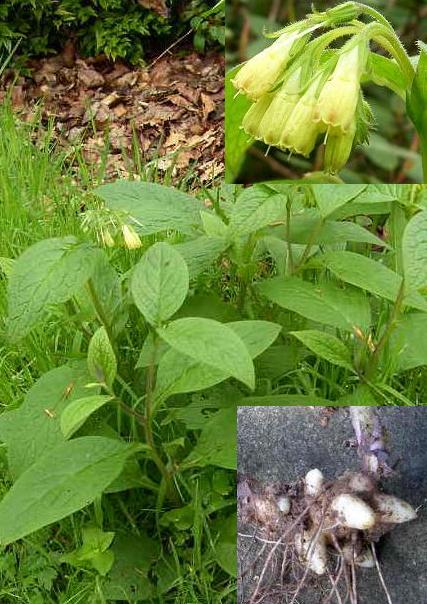This perennial is a native of mainland Britain, but is a garden escapee in Ireland. It prefers damp, woodland shade or riverbanks, but will grow in most situations. It can be quite invasive, but looks well in a larger, woodland setting. The pale yellow, tubular flowers appear in small clusters in May and June, held above the foliage on 20-25mm long stems. Tuberous Comfrey shares the properties of the other Comfries so has been used as a medicinal herb, possibly as a poultice - hence the name, Knitbone. The tuberous rhizomes make it very difficult to eradicate completely by digging it up as any small fragments left behind soon regrow. Other plants with similar leaves include Comfrey, Borage, Foxglove and Green Alkanet. Follow these links for further details on Weeds, Weed Removal and Weed Prevention. |
 |